The 7 Tests Every Man Over 40 Should Master
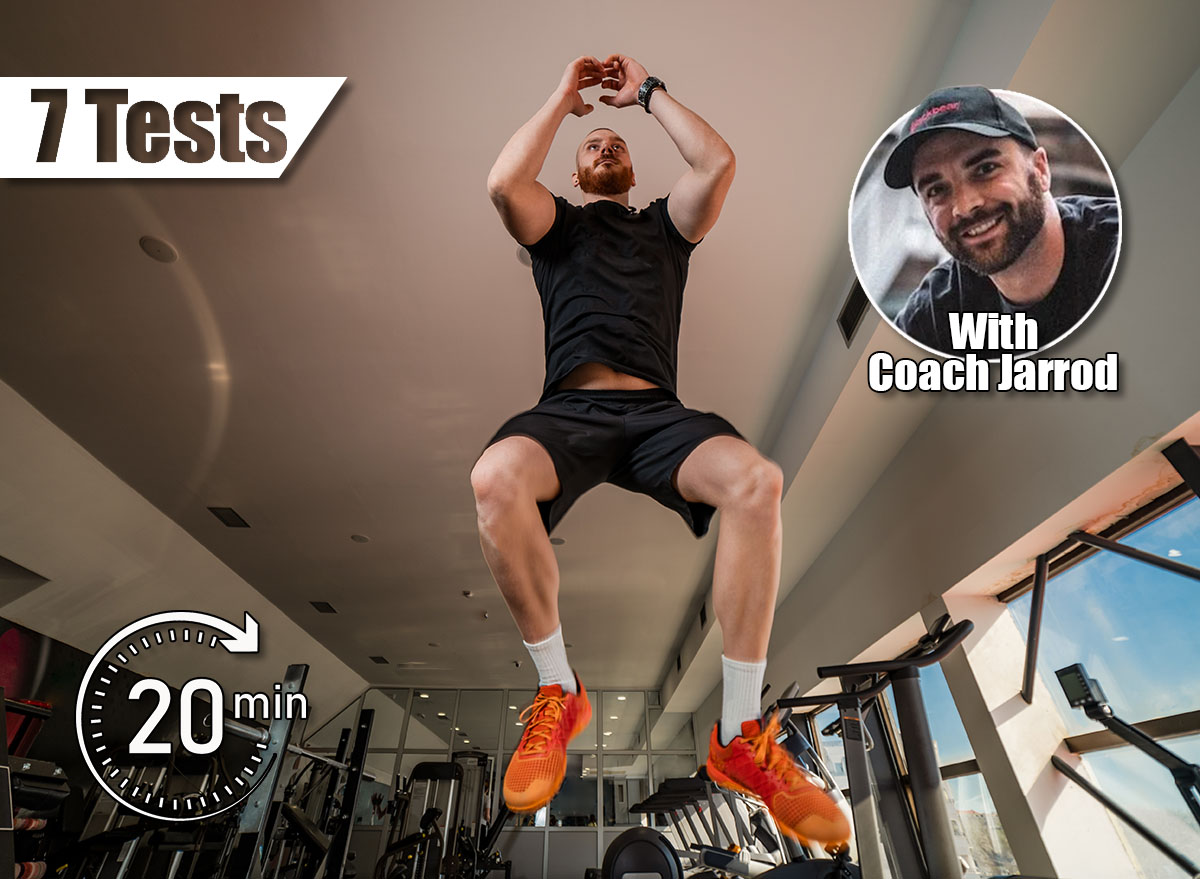
Don’t let age fool you; getting older doesn’t mean slowing down. It should push you to test yourself in new ways. That’s where fitness tests come in clutch. They give you a real-time assessment of how strong, mobile, and capable your body is. They expose your weaknesses and highlight what you’re doing right.
For men over 40, these tests matter even more. Muscle mass naturally declines with age, recovery slows, and endurance often declines. But that doesn’t mean you can’t stay competitive with your younger self. Mastering these tests will help you maintain strength, power, and resilience well into the years ahead.
The following tests challenge every aspect of fitness: strength, power, stability, and endurance. They’re simple to perform and require little to no equipment, but they reveal a lot about your overall health and fitness.
If you want to know where you stand and how to improve, these are the seven tests every man over 40 should master.
Strength Test #1: Max Push-Ups
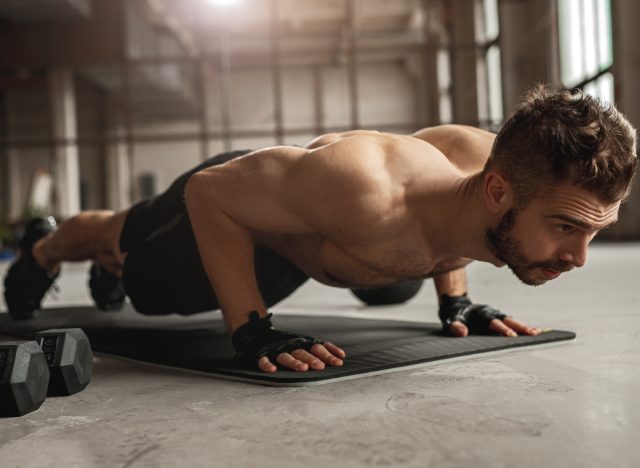
Push-ups measure your ability to stabilize your entire body while moving through a full range of motion. For men over 40, mastering this test means maintaining chest, shoulder, and core strength, all while improving joint health and resilience.
How to Do It:
- Start in a high plank with your hands directly under your shoulders.
- Engage your core and glutes to create a straight line from head to heels.
- Lower your chest until it nearly touches the floor, keeping your elbows at a 45-degree angle.
- Press back to the starting position without letting your hips sag.
- Perform as many reps as possible without breaking form.
Form Tip: Keep your head neutral and avoid flaring your elbows out too wide.
Where Your Score Ranks:
- Excellent: 40+
- Good: 25–39
- Needs Work: Under 25
Strength Test #2: Max Pull-Ups
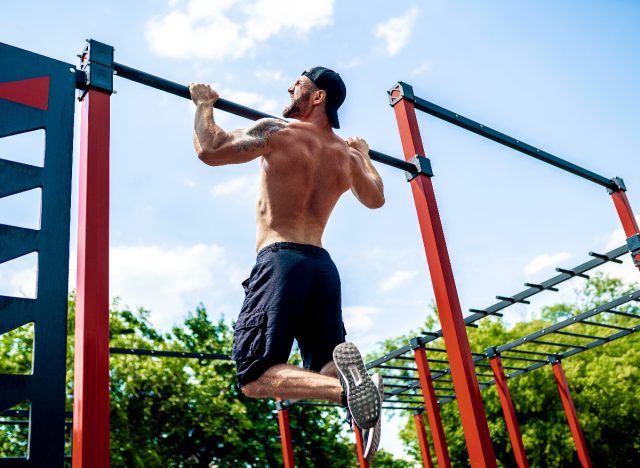
Pull-ups are the ultimate test of relative upper-body strength. They measure grip, back, and arm strength while challenging your ability to control your bodyweight. For men over 40, this test helps maintain critical pulling strength, which translates to better posture and shoulder health.
How to Do It:
- Grip a pull-up bar with your palms facing away and hands shoulder-width apart.
- Engage your core and hang with your arms fully extended.
- Pull your chest toward the bar, keeping your elbows tight to your sides.
- Pause briefly at the top, then lower with control.
- Repeat for as many clean reps as possible.
Form Tip: Avoid kipping or swinging. Strict reps provide the most accurate test of strength.
Where Your Score Ranks:
- Excellent: 12+
- Good: 6–11
- Needs Work: Under 6
Strength Test #3: Max Plank Hold
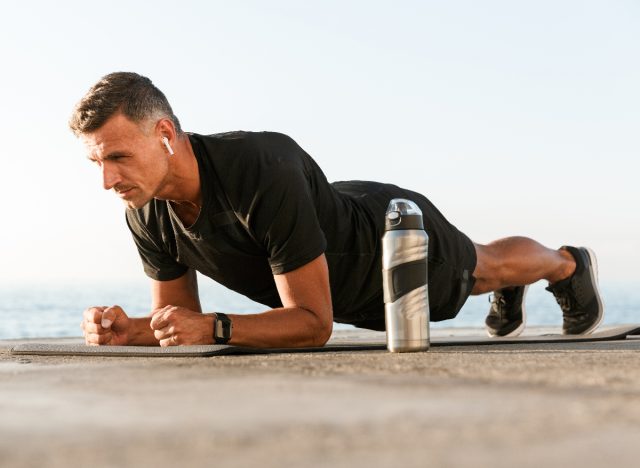
A strong core supports every lift, run, and daily movement. The plank hold measures your ability to stabilize under tension, a critical skill for preventing back pain and maintaining function as you age.
How to Do It:
- Start on your forearms with elbows under your shoulders.
- Extend your legs behind you and squeeze your glutes.
- Keep your body in a straight line from head to heels.
- Hold this position as long as possible without letting your hips drop or pike.
Form Tip: Focus on pulling your belly button toward your spine and don’t hold your breath.
Where Your Score Ranks:
- Excellent: 3+ minutes
- Good: 2–3 minutes
- Needs Work: Under 2 minutes
Strength Test #4: Max Med Ball Slams in 30 Seconds
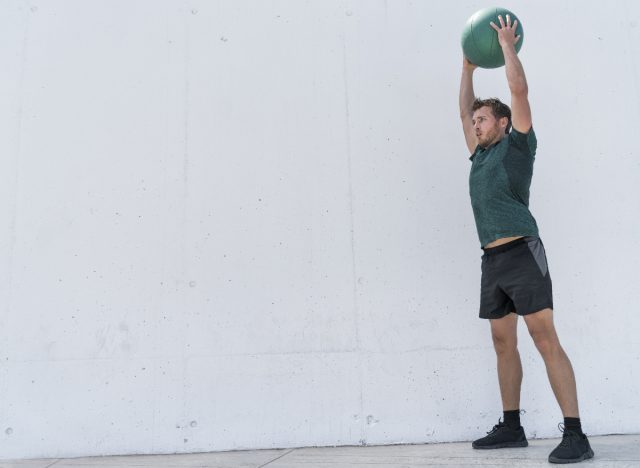
This test blends power and conditioning. Med ball slams measure how quickly you can generate force while maintaining control. Use a sand-filled med ball to keep it from bouncing dangerously. For men over 40, this test improves explosive power while keeping the movement joint-friendly.
How to Do It:
- Stand with feet shoulder-width apart, holding a sand-filled med ball overhead.
- Engage your core and drive the ball downward as hard as possible.
- Pick it up quickly and reset to the overhead position.
- Repeat for 30 seconds, counting your reps.
Form Tip: Use your legs and core, not just your arms, to generate power.
Where Your Score Ranks:
- Excellent: 25+ slams
- Good: 18–24 slams
- Needs Work: Under 18 slams
Strength Test #5: Max Broad Jump

The broad jump measures explosive lower-body power, a key component of athleticism that often declines with age. It also reflects hip and ankle mobility. Maintaining this power after 40 improves overall movement efficiency and protects against injury.
How to Do It:
- Stand with feet hip-width apart.
- Swing your arms back and bend your knees slightly.
- Explosively jump forward as far as possible, landing softly on both feet.
- Measure the distance from your starting point to your heels.
- Perform three attempts and record your best jump.
Form Tip: Land with soft knees and keep your chest tall to avoid collapsing forward.
Where Your Score Ranks:
- Excellent: 8+ feet
- Good: 6–8 feet
- Needs Work: Under 6 feet
Strength Test #6: Max Vertical Jump

Like the broad jump, the vertical jump tests lower-body explosiveness, but it also emphasizes coordination and reactive power. For men over 40, maintaining a substantial vertical jump means preserving quickness, speed, and the ability to generate force rapidly.
How to Do It:
- Stand tall with feet shoulder-width apart near a wall or a Vertec device.
- Swing your arms back and quickly dip into a quarter squat.
- Explosively jump straight up, reaching as high as possible.
- Mark or record your highest reach.
- Perform three attempts and record your best jump.
Form Tip: Use a quick dip and drive through your hips to maximize height.
Where Your Score Ranks:
- Excellent: 20+ inches
- Good: 15–19 inches
- Needs Work: Under 15 inches
Strength Test #7: Mile Time

The mile run is a benchmark for cardiovascular health and endurance. For men over 40, maintaining a respectable mile time means keeping your heart strong, your lungs efficient, and your stamina sharp.
How to Do It:
- Warm up with dynamic stretches and a light jog.
- Start your run at a steady pace you can maintain for the full mile.
- Use a track or GPS watch for accurate measurement.
- Push yourself in the final quarter-mile to maximize your time.
- Record your finishing time.
Form Tip: Focus on smooth, rhythmic breathing and avoid starting too fast.
Where Your Score Ranks:
- Excellent: Under 7:30
- Good: 7:30–9:00
- Needs Work: Over 9:00